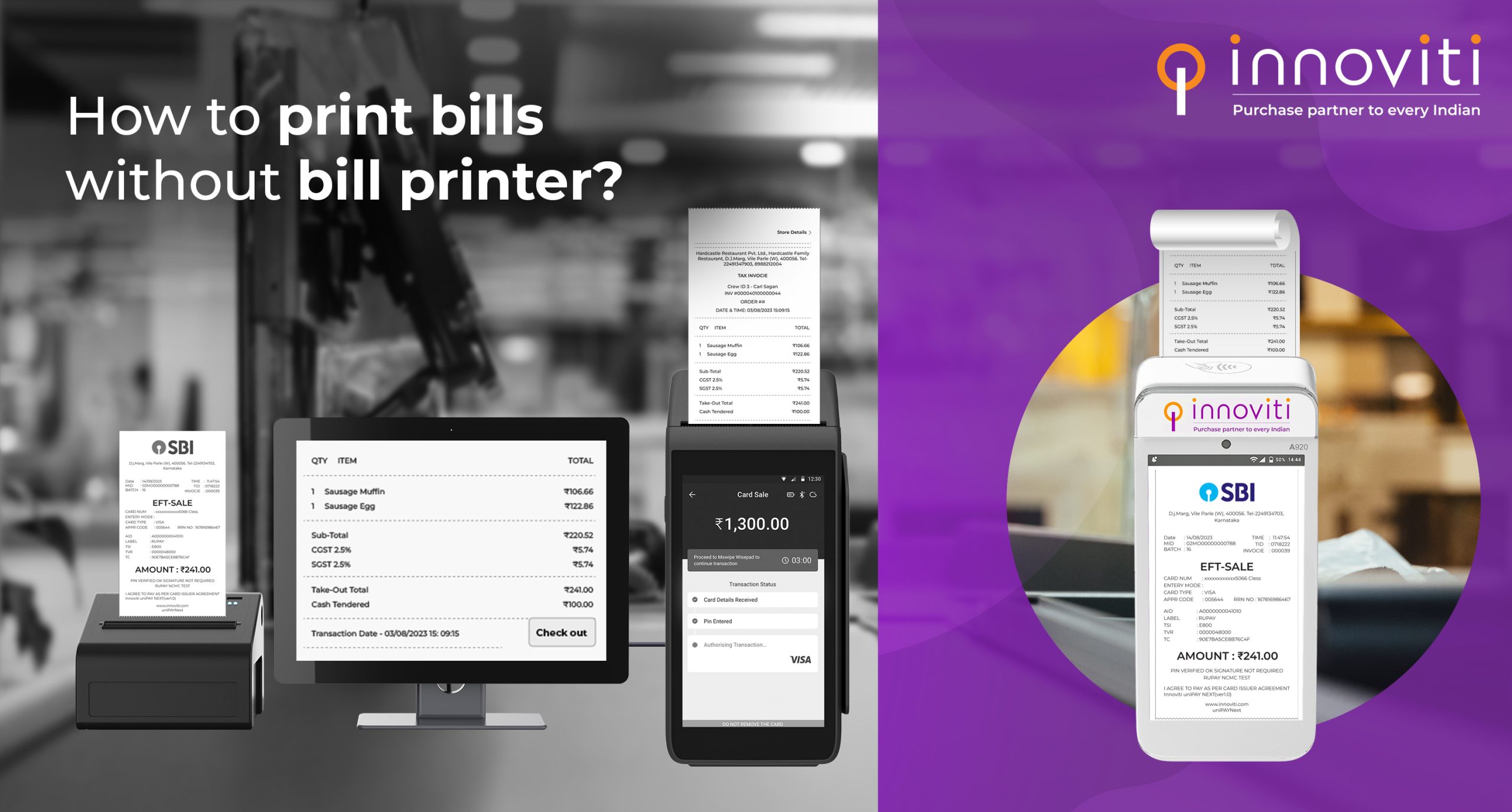“I just can’t get rid of bill printers. Given the amount of pilferage, I need security to check the bills at exit, and then my staff needs to print the day-close report,” said Raghav, CEO of one of India’s largest grocery chains, while catching up with his friend Ramesh, head of Mumbai’s leading department store chain. “Payments have gone digital from cash, check-out has gone touch from type, and promotions have gone digital from coupons, but nothing has changed with the bill printer,” he added. “The same black box, occupying my counter, and doing nothing more than spewing out printer paper,” he added.
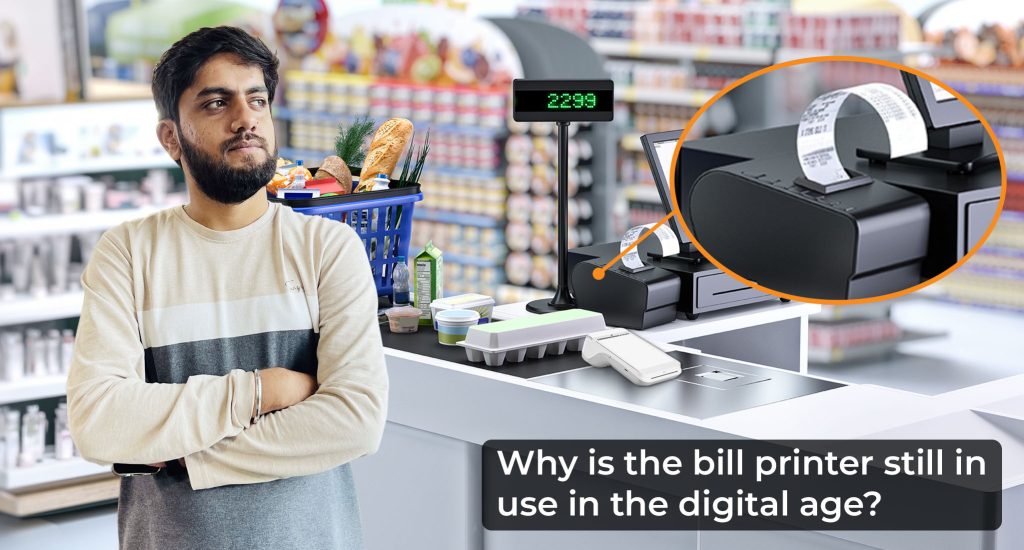
Bill printers, the black boxes 6” x 8” wide were introduced in 1970s to replace hand-written bills with electronically generated ones. They saved time, made billing accurate, and made returns easy to manage. They were also useful for computing taxes and for accounting.
This helped save paper and also gave a reason for the shop keeper to get the customers mobile number for marketing. But in some categories the paper bill was very much alive. Pharmacies, grocery stores, and hospitals. Use cases included preventing shoplifters from getting away with goods they had not paid for and day-close report for cashiers.
For a retail chain with 100 stores, 4 check-out counters, and cutting 150 bills a day, this would amount to a capex of Rs. 40 lakhs, with Rs. 40,000 being spent in every new store. The annual paper roll and maintenance costs would be upwards of Rs. 30 lakhs. If the average bill value was Rs. 500, like in a grocery or pharma shop, then the annual paper roll and maintenance costs could shave off 10-12 bps from the profits. In retail where profits were typically 7 to 8%, this could contribute to 1 to 2% of profits. Besides this was the hassle of maintaining extra printers and logistics.
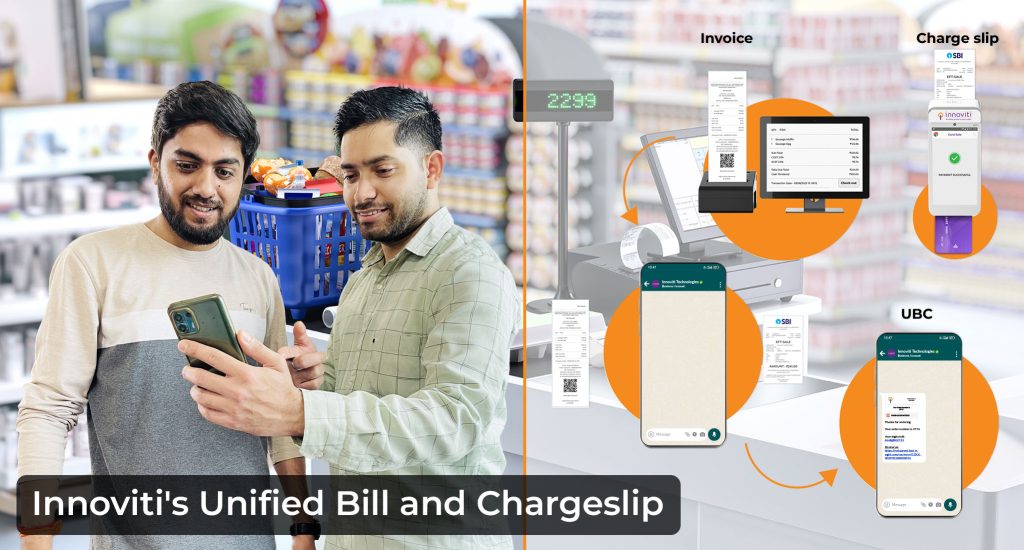
‘“Did you try Innoviti’s unified bill and charge-slip technology,” asked Ramesh. “They have a patented technology for smartly combining a bill and its digital payment charge-slip that they provide with their uniPAYNext enterprise payment POS software. This can be then sent to a customer through SMS or WhatsApp, and also printed on the payment terminal printer that they provide using their software. This way you eliminate the bill printer, its annual maintenance, stocking of paper rolls, logistics, repair, all the associated overheads, and still have the option of printing or sending a SMS or WhatsApp,” added Ramesh.
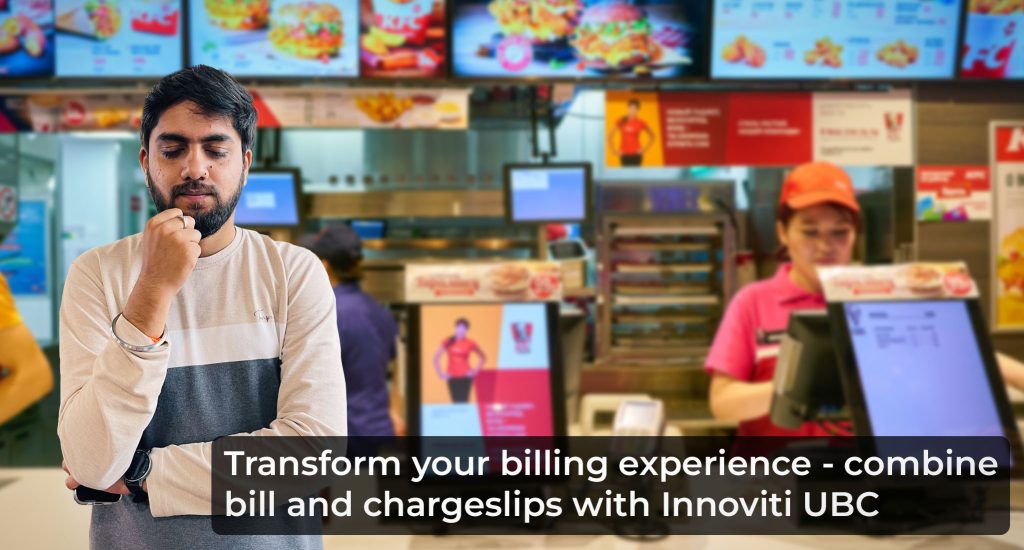
Raghav called up the Innoviti team and their regional head invited him to visit one of the most admired QSR chains in the country to showcase the technology. Raghav ordered a burger and saw the process for himself. It was smooth and intuitive. The modern display on the terminal guiding him through his mobile entry, and yet allowing him to select a paper bill at the end of it. He saw a combined bill and charge-slip and his mind started racing with the possibilities of combining what a consumer buys with how he pays for it, two different yet related aspects of a consumer’s personality.
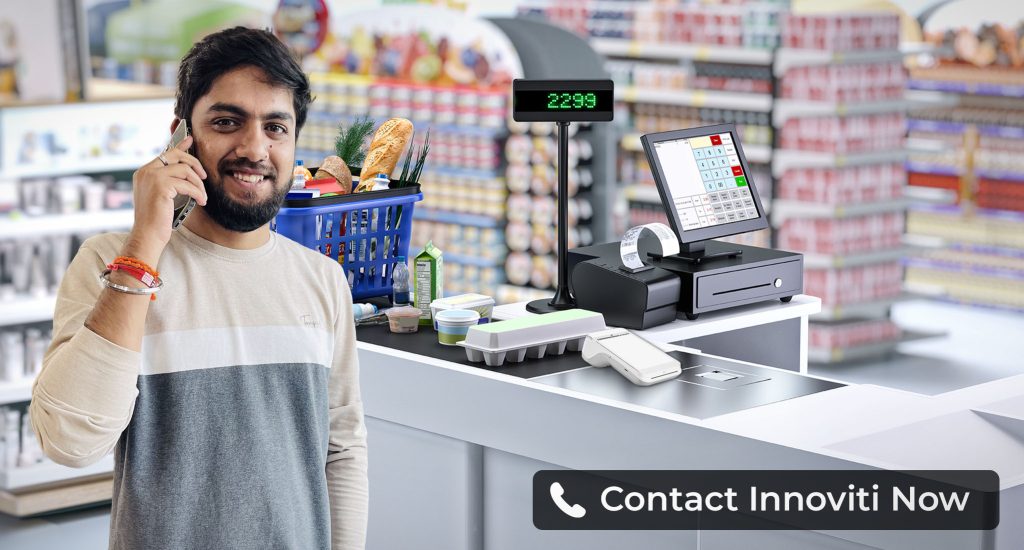
Raghav decided to deploy uniPAYNext in his outlets. He not only saved money, but started getting unique insights into his business. But what he loved the most was re-organizing the counter by getting rid of the ugly black box.
